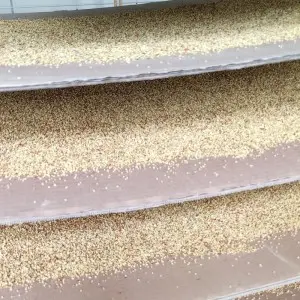Dec . 31, 2024 02:33 Back to list
Innovative Approaches to Fruit Bagging for Enhanced Pomegranate Product Quality and Preservation
Fruit Bagging in Pomegranate Products An Innovative Approach to Quality Enhancement
Pomegranates (Punica granatum) are a remarkable fruit known for their vibrant color, health benefits, and unique flavor. In recent years, the demand for high-quality pomegranates and their products has surged, driven by increasing health consciousness and the fruit’s numerous health advantages. However, to meet these demands, producers face several challenges, particularly in terms of maintaining the quality and aesthetics of the fruit throughout its growing and harvesting stages. One innovative solution gaining attention in pomegranate farming is the technique of fruit bagging.
Fruit bagging is the practice of covering young developing fruits with protective bags, typically made from paper or mesh fabric. This technique has been widely applied in various fruit crops, but its adoption in pomegranate cultivation is relatively recent. The primary goal of fruit bagging is to protect the developing fruits from pests, diseases, and adverse weather conditions, which can significantly affect their quality and yield.
One of the most significant benefits of fruit bagging in pomegranates is pest management. Pomegranates are susceptible to various pests, including fruit flies, aphids, and mealybugs. These pests can damage the fruit, leading to reduced market value and shelf life. By enclosing the fruit in protective bags, growers can significantly reduce the incidence of pest infestations. This not only helps in preserving the quality of the fruit but also reduces the need for chemical pesticides, making the farming process more sustainable and environmentally friendly.
Additionally, fruit bagging shields the pomegranates from diseases. Fungal infections, such as anthracnose or botrytis, can thrive in humid conditions and can cause significant damage to the fruit. The bags create a barrier that reduces moisture accumulation and, in turn, lowers the likelihood of fungal infections. This protective measure leads to healthier fruit and ensures that pomegranates reach consumers without the blemishes or rot often associated with untreated fruits.
fruit bagging in pomegranate products

Weather conditions also pose a risk to pomegranate cultivation, with excessive sunlight and rain potentially harming the fruit. Excessive sun exposure can lead to sunburn on pomegranates, causing unsightly brown patches on the skin. Simultaneously, heavy rainfall can contribute to splitting and cracking of the fruit, resulting in substantial losses for growers. Fruit bagging helps mitigate these risks by providing a physical barrier that helps regulate exposure to environmental factors. The bags reflect sunlight, thereby reducing the risk of sun damage, while also absorbing excess moisture during rainy periods, thereby preventing splitting.
Moreover, fruit bagging can enhance the overall appearance and marketability of pomegranates. When fruits are bagged, they are shielded from bruising and other physical damages that can occur during growth. As a result, the fruits are often more uniform in size, shape, and color, making them more appealing to consumers. This aesthetic appeal is crucial in the fruit market, where presentation can significantly influence purchasing decisions.
While fruit bagging offers numerous advantages, it also comes with some challenges. The labor costs associated with the bagging process can be high, particularly for large-scale farms. Additionally, there is a need for research on the most effective materials and methods for bagging pomegranates to maximize benefits. However, with the continued advancement of agricultural technology and sustainable practices, these challenges can be addressed.
In conclusion, fruit bagging represents a promising innovation in the cultivation of pomegranates that addresses several key concerns in the industry. By protecting fruits from pests, diseases, and adverse weather conditions, this method not only enhances fruit quality and yield but also promotes environmental sustainability. As awareness of this technique grows, it has the potential to transform pomegranate farming practices, leading to better products for consumers and higher returns for producers. Ultimately, the successful implementation of fruit bagging in pomegranate cultivation will serve as a model for other fruit crops, epitomizing the balance between agricultural innovation and sustainability.
-
High-Viability Male Kiwipollen for Sale | Boost Yield
NewsAug.06,2025
-
Eco Fruit Paper Bags for Peak Freshness | Durability Focused
NewsJul.31,2025
-
Pollen Peach Tree for Pure Pollination and High-Quality Peach Pollen
NewsJul.30,2025
-
Premium Cherry Pollen for Pure Pollination & Different Types
NewsJul.30,2025
-
Artificial Pollination Solutions for Various Plant Pollen Types
NewsJul.29,2025
-
Artificial Pollination Solutions for All Plant Pollen Types
NewsJul.29,2025